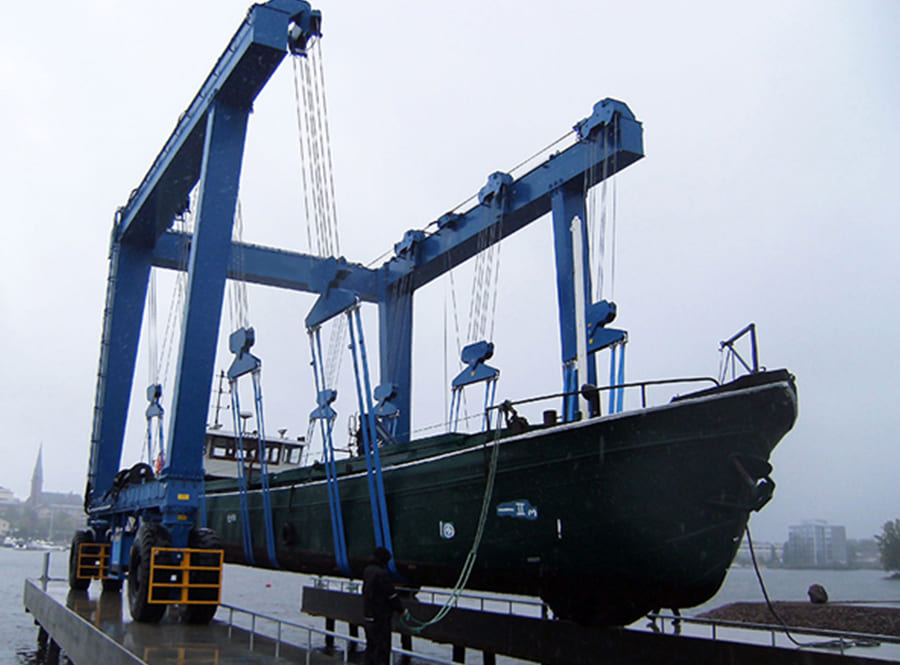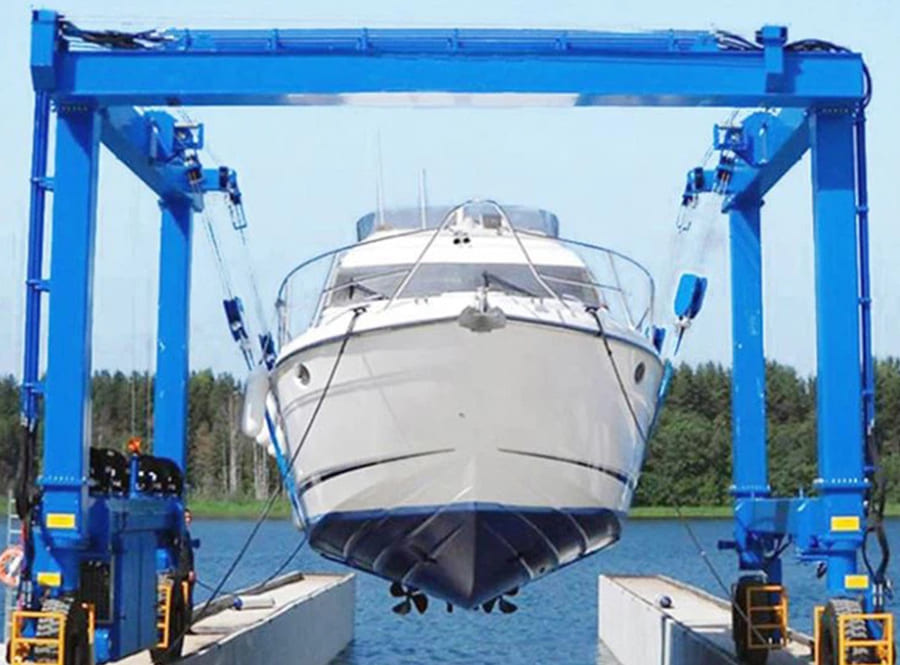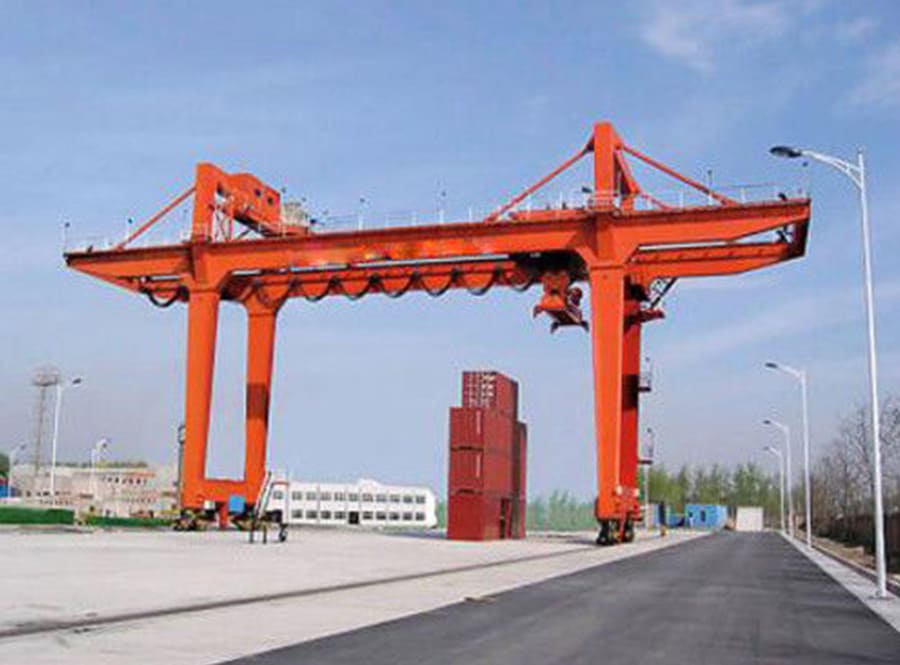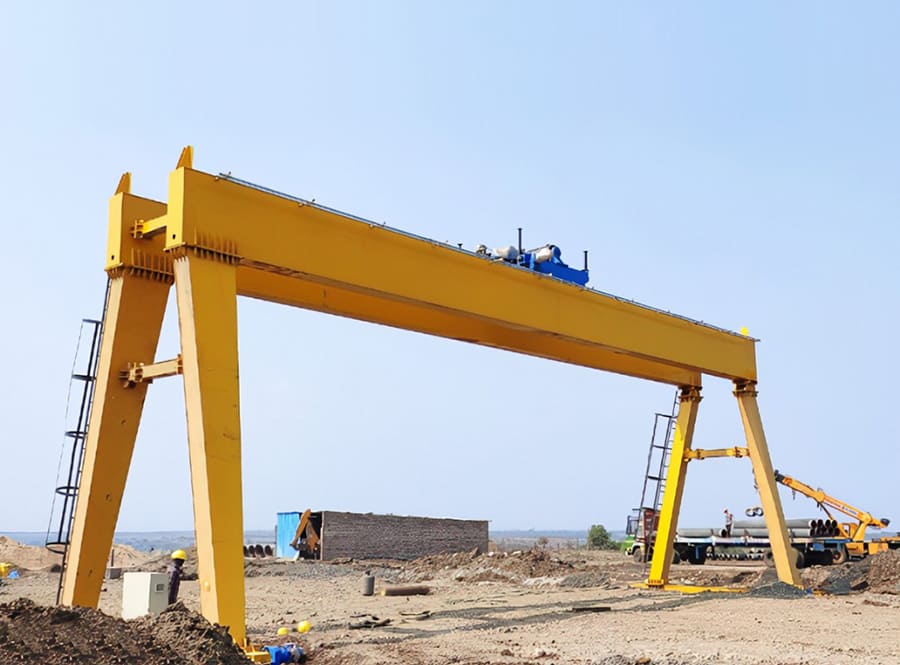1. Classification of best dockside gantry crane supplier
(1) According to the main girder classification, general gantry cranes can be divided into single main girder gantry cranes and double main girder gantry cranes.
(2) According to cantilever classification, general-purpose custom dockside gantry crane equipment can be divided into single-cantilever gantry cranes, double-cantilever gantry cranes and non-cantilever gantry cranes.

(3) According to the classification of fetching devices, general gantry cranes can be divided into hook gantry cranes, grab gantry cranes, electromagnetic gantry cranes, dual-purpose gantry cranes and three-purpose gantry cranes.
(4) According to the classification of control methods, general gantry cranes can be divided into cab control, ground wired control, wireless remote control and multi-point control.
(5) Hook gantry cranes are classified according to the number of trolleys and can be divided into single trolley hook gantry cranes, double trolley hook gantry cranes and multi- trolley hook gantry cranes
2. Basic composition and requirements of general gantry crane
(1) Mast legs. Gantry legs are steel structures that support the automated dockside gantry crane cost on its foundation or along tracks laid on the ground.
Mast legs can be divided into rigid and flexible ones. Rigid legs are rigid legs or double legs that are fixed on the bridge to form a stable frame. Flexible gantry legs are single legs connected to the gantry with hinges. Or double legs. Generally, rigid legs are used for the mast legs; when the span is greater than 30m, dyed legs are used. The gantry legs are generally an isosceles trapezoid or a right-angled trapezoid welded from Q235B steel plates.
(2) The cantilever arm is the extended structure of the lifting trolley running outside the crane track. The forward arm is the cantilever arm that the gantry crane can extend or retract to obtain the gantry movement space.
The base arm should have an upper temperature. After a 25-hour static load test, when the unloaded trolley is at the fulcrum position of the mast leg, the oil level at the end should not be less than 0.7L/350 (L is the centerline of the leg to The limit distance of the object device on the cantilever).
(3) The safety protection devices that should be installed on safety-prevention cranes include lifting weight limiter, lifting height limiter, descending depth position and operating stroke limiter, interlocking protection safety device, buffer, wind resistance and anti-skid It is advisable to install wind speed and wind level alarms (when the crane lifting height is >12m), anti-tilt safety hooks, and the protective effects of the brackets on the track sweeper. It is advisable to install safety protection devices with deflection indicators or limiters (lifting Heavy L span ≥ 40m), operation alarm device, anti-collision device.

3. Working environment conditions requirements for general gantry cranes
The climatic conditions are the same as the outdoor working conditions of the general industrial dockside gantry crane system, and other requirements are the same as the general bridge crane.
4. Working characteristics and uses of general gantry cranes
General-purpose gantry cranes have the characteristics of high site utilization, large operating range, wide adaptability, and strong versatility. They are mainly used in outdoor cargo yards, material yards, and bulk cargo loading and unloading operations.





















